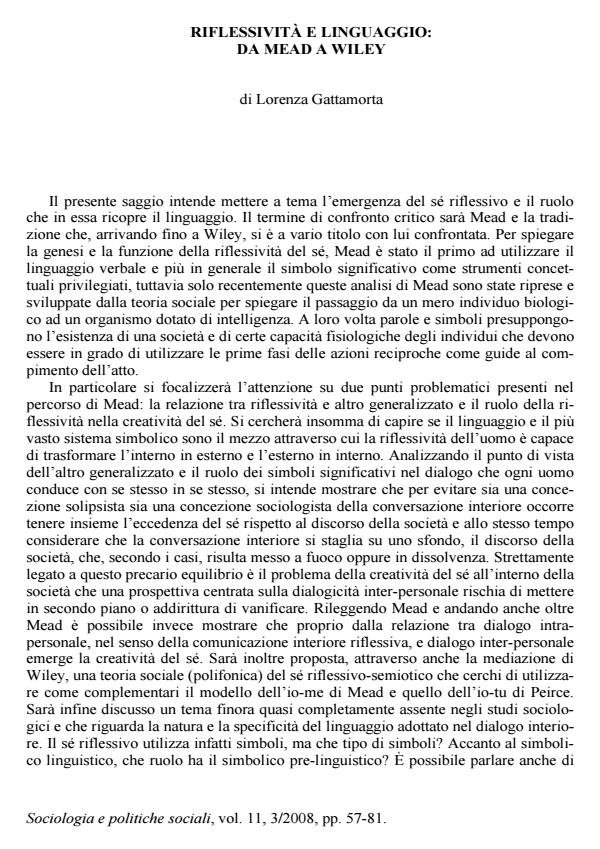Riflessività e linguaggio: da Mead a Wiley
Titolo Rivista SOCIOLOGIA E POLITICHE SOCIALI
Autori/Curatori Lorenza Gattamorta
Anno di pubblicazione 2009 Fascicolo 2008/3
Lingua Italiano Numero pagine 25 P. 57-81 Dimensione file 248 KB
DOI
Il DOI è il codice a barre della proprietà intellettuale: per saperne di più
clicca qui
Qui sotto puoi vedere in anteprima la prima pagina di questo articolo.
Se questo articolo ti interessa, lo puoi acquistare (e scaricare in formato pdf) seguendo le facili indicazioni per acquistare il download credit. Acquista Download Credits per scaricare questo Articolo in formato PDF

FrancoAngeli è membro della Publishers International Linking Association, Inc (PILA)associazione indipendente e non profit per facilitare (attraverso i servizi tecnologici implementati da CrossRef.org) l’accesso degli studiosi ai contenuti digitali nelle pubblicazioni professionali e scientifiche
Reflexivity and Language: from Mead to Wiley - The author studies the process involved in the emergence of the reflexive self through the use of significant symbols (pre-linguistic-gestural and linguistic-verbal) by means of a critical comparison with Mead and the legacy he left to contemporary sociologists (in particular Jürgen Jabermas, Randall Collins, Margaret Archer and Nobert Wiley). The reflexive-semiotic self is analysed by combining Mead’s I-Me and Peirce’s I-You models into an I-You-Me triadic model. Particular attention is paid to an issue that has been neglected in social theory until now: the language of interior conversation, that does not qualify as a public language, though it has a distinct structural profile. This inner speech is presented as a sort of personalised «dialect» in which syntax is abbreviated and signs, only partially verbal, are often tied to a sensory imagery. Its semantic privacy does not prevent one from making it public, at least to some extent, and to use it for research purpose.
Lorenza Gattamorta, Riflessività e linguaggio: da Mead a Wiley in "SOCIOLOGIA E POLITICHE SOCIALI" 3/2008, pp 57-81, DOI: